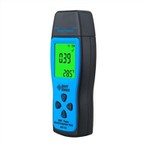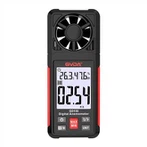How many fault methods can be roughly divided into for Fluke multimeter?
A multimeter can be used not only to measure the resistance of the object being measured, but also to measure AC and DC voltages. Some multimeters can even measure the main parameters of transistors and the capacitance of capacitors. Being fully proficient in using a multimeter is one of the most basic skills in electronic technology.
Common multimeters include analog multimeters and digital multimeters. The pointer multimeter is a multi-functional measuring instrument with a meter as the core component. The measured value is read by the pointer of the meter. The measured value of the digital multimeter is directly displayed in digital form on the LCD screen, which is easy to read, and some also have a voice prompt function. A multimeter is an instrument that combines a voltmeter, ammeter and ohmmeter with a common meter head. Multimeter failures occur due to many factors, and the problems encountered are highly random. There are not many rules to follow, and repairs are difficult. The editor on the front has compiled some repair experience accumulated in many years of work for your reference. Methods for troubleshooting Fluke multimeters can be roughly divided into the following categories:
(1) The voltage measurement method measures whether the working voltage of each key point is normal and can quickly find the fault point. Such as measuring the working voltage and reference voltage of the A/D converter.
(2) The sensory method relies on the senses to directly judge the cause of the fault. Through visual inspection, it can be found such as broken wires, desoldering, short circuits, broken fuse tubes, burned components, mechanical damage, and copper foil on printed circuits. Warping and breakage, etc.; you can touch the temperature rise of batteries, resistors, transistors, and integrated blocks, and refer to the circuit diagram to find out the cause of abnormal temperature rise. In addition, you can also use your hands to check whether the components are loose, whether the integrated circuit pins are firmly inserted, and whether the transfer switch is stuck; you can hear and smell whether there are any strange sounds and smells.
(3) The circuit breaking method disconnects the suspicious part from the whole machine or unit circuit. If the fault disappears, it means that the fault is in the disconnected circuit. This method is mainly suitable for situations where there is a short circuit in the circuit.
(4) Short-circuit method. The short-circuit method is generally used in the methods of checking A/D converters mentioned above. This method is often used when repairing weak current and micro-electrical instruments.
(5) Component measurement method: When the fault has been reduced to a certain component or several components, it can be measured online or offline. If necessary, replace it with a good component. If the fault disappears, it means the component is bad.
(6) The interference method uses the voltage induced by the human body as an interference signal to observe the changes in the liquid crystal display. It is often used to check whether the input circuit and display part are intact.






